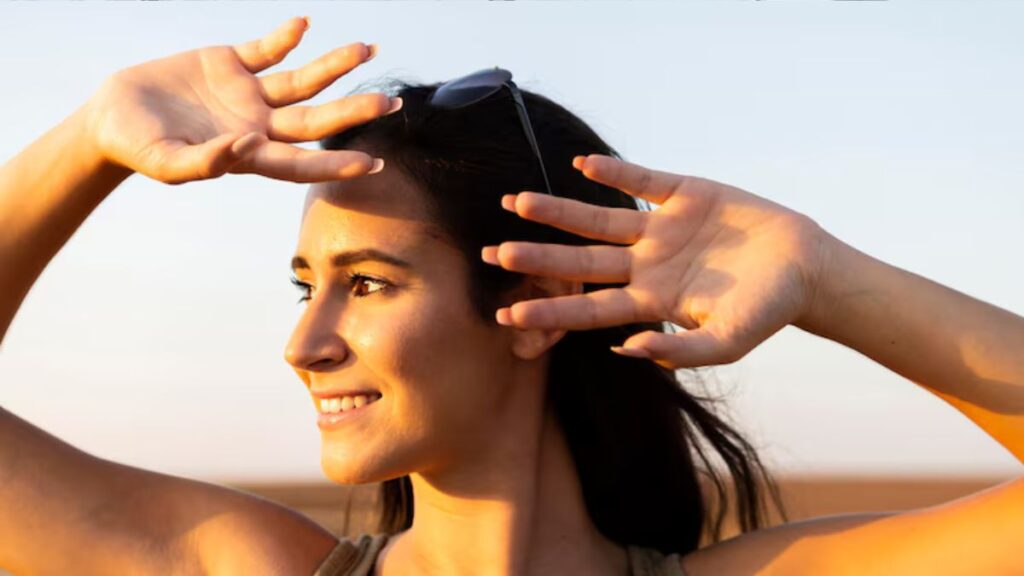Understanding Botox and How It Works
Botox, short for Botulinum Toxin, is a popular cosmetic treatment that temporarily reduces or eliminates facial wrinkles. It works by blocking nerve signals in the muscles where it is injected, leading to a reduction in muscle activity. This effect smooths out lines and gives the face a more youthful appearance.
Botox is commonly used to treat forehead lines, frown lines, and crow’s feet. The effects of Botox usually start to show within 3 to 5 days and reach their peak in about two weeks. The results can last between 3 to 6 months, depending on the individual and the area treated.
With the popularity of Botox growing rapidly, many people who receive the treatment also wonder how it fits into their lifestyle—particularly when it comes to sun exposure and tanning.
Can You Tan After Botox? The Quick Answer
The short answer is: no, it is not recommended to tan immediately after getting Botox. Whether you’re thinking of laying out in the sun, hitting the tanning bed, or applying self-tanner, there are a few important guidelines to follow.
Tanning after Botox can interfere with your results, increase the risk of side effects, and potentially compromise the longevity of the treatment. Understanding the reasons behind this advice can help you make informed decisions and protect your investment in Botox.
Why Tanning After Botox is Not Advised
There are several reasons why tanning after Botox is discouraged, especially within the first 24 to 48 hours after treatment.
Increased Risk of Bruising and Swelling
After Botox injections, your skin is more sensitive and vulnerable. Heat from the sun or tanning beds can dilate blood vessels and increase circulation, which may lead to more noticeable bruising or swelling around the injection sites. This can prolong the healing process and make your skin look inflamed or irritated.
Potential for Botox Migration
One of the most crucial aspects of Botox treatment is the precision of injection. Excessive heat or lying flat while tanning can increase the risk of the Botox spreading to unintended areas. This migration can lead to undesirable outcomes such as drooping eyelids or uneven facial expressions.
Dehydration of the Skin
Exposure to the sun or UV rays can dry out the skin. Dehydrated skin heals more slowly and may not respond as well to Botox. Moreover, dry skin tends to show lines and wrinkles more prominently, which can counteract the effects of your treatment.
UV Damage Counteracts Botox Benefits
Botox helps to reduce the appearance of fine lines and wrinkles. However, UV rays are a major cause of premature aging. Tanning can speed up collagen breakdown and increase the appearance of fine lines, effectively undoing the results Botox is designed to improve.
Expand your knowledge and check out more posts on our blog!
When Is It Safe to Tan After Botox?
It is generally advised to wait at least 48 hours before exposing your skin to any form of heat, including tanning. However, the safest approach is to avoid tanning for at least one week after your Botox treatment.
This timeframe allows your skin to heal, the Botox to fully settle into the targeted muscles, and reduces the risk of complications. Always follow your healthcare provider’s specific aftercare instructions, as they may tailor advice based on your skin type, medical history, and the areas treated.
Alternatives to Tanning Post-Botox
If you’re aiming for a sun-kissed glow but want to avoid any potential risks, here are safer options:
Use a High-Quality Self-Tanner
Opt for a self-tanning lotion or mousse that doesn’t contain harsh chemicals. Apply it gently and avoid rubbing the skin too hard, especially near the injection sites. Wait at least 24–48 hours before applying any product.
Try Bronzing Makeup
Temporary bronzing powders or creams are a good alternative if you need a quick tan for a special occasion. These products don’t penetrate the skin and can be removed easily without affecting your Botox results.
Embrace a Healthy Skincare Routine
Keeping your skin healthy and hydrated can enhance the effects of Botox and give you a radiant, youthful look. Focus on skincare products rich in antioxidants, vitamin C, and hyaluronic acid to boost skin health without the sun damage.
Sun Exposure vs. Tanning Beds After Botox
It’s not just outdoor tanning that you need to be cautious about—tanning beds are equally, if not more, risky.
Tanning beds expose your skin to concentrated UV radiation, which is harmful in several ways:
-
Higher temperatures can intensify swelling and bruising.
-
Artificial UV rays may accelerate skin aging and counter Botox benefits.
-
Lying flat during the session may contribute to Botox migration, especially in areas like the forehead or around the eyes.
The bottom line: whether it’s natural sunlight or tanning beds, it’s best to avoid them for at least a week after your Botox appointment.
Tips for Protecting Your Skin Post-Botox
To ensure the best results from your Botox treatment and protect your skin, follow these expert-approved aftercare tips:
Stay Cool
Avoid hot showers, saunas, steam rooms, and intense workouts for the first 24 to 48 hours. Heat can increase blood flow and reduce the efficacy of Botox.
Keep Upright
Remain in an upright position for at least 4–6 hours after your Botox injections. This helps prevent the product from migrating.
Don’t Rub or Massage the Area
Even light pressure can move the Botox from the intended muscles. Be gentle with your skincare routine for the first couple of days.
Use Sunscreen Daily
Whether or not you’re actively tanning, wearing a broad-spectrum SPF 30 or higher every day is crucial. Sunscreen protects your skin from UV damage and enhances the longevity of Botox.
If you want to read more, visit our blog page. We have more topics!
How Long Do Botox Results Last if You Tan?
If you expose your skin to tanning beds or direct sunlight regularly, it may shorten the effectiveness of your Botox treatment. UV rays contribute to skin damage and can decrease collagen levels, which may reduce how long Botox lasts.
Typically, Botox lasts around 3 to 6 months. However, with frequent sun exposure, you may find your results fading closer to the 3-month mark.
To maintain your results longer:
-
Avoid sun exposure as much as possible
-
Wear hats and protective clothing when outdoors
-
Keep your skin hydrated and well-moisturized
-
Stick to a consistent skincare regimen that supports skin repair
Can You Get Botox If You’re Already Tanned?
Yes, you can receive Botox if you have a tan, but with caution. If you’ve recently been sunburned or have any skin irritation due to tanning, it’s best to postpone your appointment. Injecting Botox into sun-damaged skin can increase the risk of complications and might not yield optimal results.
Make sure your skin is healthy, hydrated, and free of inflammation at the time of your appointment. If you’re planning to tan beforehand, give your skin at least 48–72 hours to recover before undergoing any injectable procedure.
Long-Term Skin Health and Botox Maintenance
Botox is not just a one-time treatment—it’s part of a long-term skincare and anti-aging strategy. The choices you make after each appointment have a big impact on how well and how long your results last.
Here are long-term habits to adopt if you want to get the most out of your Botox:
-
Consistent use of sunscreen
-
Regular hydration with water and skincare products
-
Avoiding smoking and excessive alcohol consumption
-
Eating a nutrient-rich diet
-
Getting touch-ups at appropriate intervals
By treating your skin well between appointments, you’ll not only preserve your Botox results but also enhance your overall skin health and appearance.
Conclusion
So, can you tan after Botox? While the idea of soaking up the sun after a fresh cosmetic procedure may be tempting, it’s clear that doing so can jeopardize your results and lead to unwanted side effects. Whether it’s natural sunlight, tanning beds, or even heat exposure from saunas, it’s best to avoid them for at least a week after Botox.
Give your skin the time it needs to heal and let the treatment settle. Opt for safer alternatives like self-tanners or bronzers if you’re after a golden glow. And don’t forget: daily sun protection is key not just after Botox, but as a part of your overall skincare routine.
FAQs
Can you go in the sun after Botox?
You should avoid direct sun exposure for at least 48 hours after Botox. Heat can increase swelling and interfere with the results.
Is it safe to use a tanning bed after Botox?
No, tanning beds expose your skin to high heat and UV rays, which can cause Botox to migrate and reduce its effectiveness.
Can self-tanner be used after Botox?
Yes, but wait at least 24–48 hours after your treatment before applying any self-tanning products to avoid irritating the skin.
How long should you wait to tan after Botox?
Ideally, wait at least 5–7 days before tanning to allow the Botox to fully settle and minimize any risk of side effects.
Does tanning make Botox wear off faster?
Yes, frequent tanning can damage the skin and accelerate the breakdown of collagen, potentially shortening the lifespan of Botox results.







